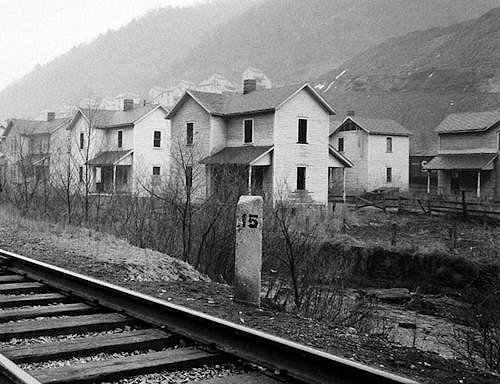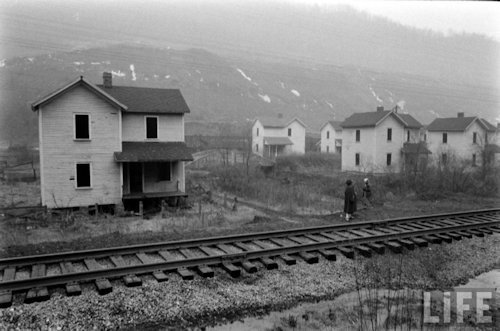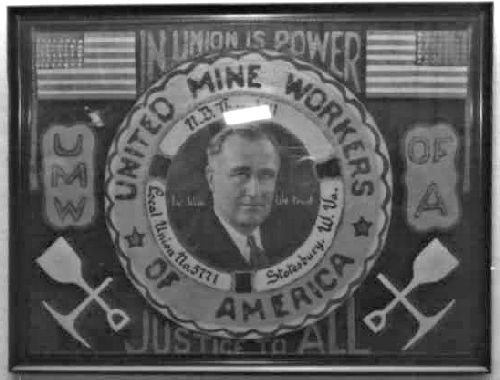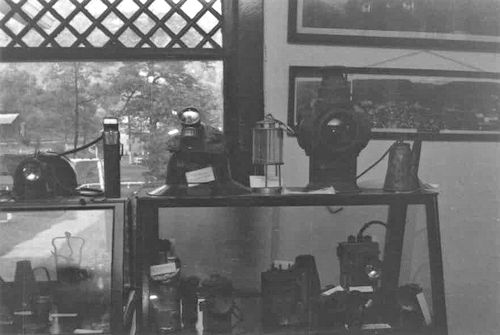STOTESBURY

This mining camp is located on Winding Gulf Creek above Tams. It was originally operated by the E.E. White Coal Co. and named for E.T. Stotesbury, who was president of Beaver Coal Co. at the time. Mining was in the Beckley seam. The Koppers Coal Co. took it over in the late 1930s. The Beckley seam was mined out by the 1940s and they switched to
the Pocahontas No. 4 seam, operating this mine until 1958. A second era for Storesbury began in the mid 1960s when Eastern Associated Coal rebuilt the mine (but didn't reopen the company store, which closed in the 1950s). This operation, called the Keystone No. 4 mine, mined the Pocahontas No. 3 and No. 4 seams and lasted into the 1980s, being one of the first longwall mines in the area. A third era at Stotesbury began with the old mine being reopened by White Mountain LLC in 2001. They installed a new fan and bathhouse but the mine shut down in 2002, ending 90 years of coal mining in Stotesbury, WV.
After the original Stotesbury mine closed in 1958, the town became a ghost town. Life Magazine photographer Paul Schutzer recorded these
images of the mostly abandonded Stotesbury in the winter of 1958-59. Apparently there were a few curious teenagers hanging around that day.
In the 1960s Eastern Gas and Fuel either rented or donated space in a building in Stotesbury for "The Nation's First Coal
Town Museum." These October 1964 photos preserved by WVSHPO document that museum. The SHPO report states, "Since that time the museum contents have been moved to Beckley."
So maybe some of the items can still be viewed at the Beckley Exhibition Coal Mine museum.

1922 image from "The Black Diamond" magazine via Google Books
Stotesbury when it was young and in its prime.
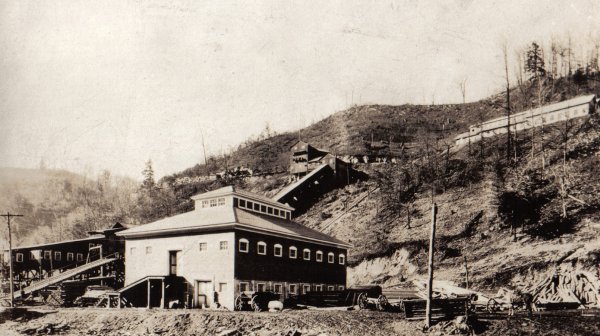
From a private post card collection
The supply house and the original Stotesbury tipple, with the head house up on the hill in the background.

1924 photo courtesy of the late Vittorio Martina
Italian immigrants just off the boat in Stotesbury.

Courtesy of "Tribute to the Coal Miner," used with permission
Here is the tipple from the Stotesbury mine with the drift mine into the Beckley seam of coal. All of the coal extraction facilities built over the years have been constructed on this
same plot of land.
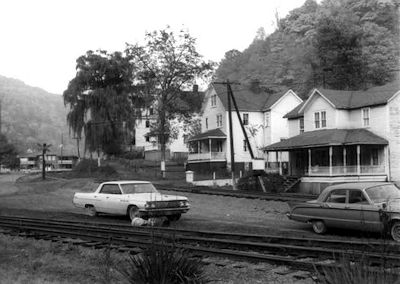
October 1964 WVSHPO image
Bosses Row in Stotesbury.
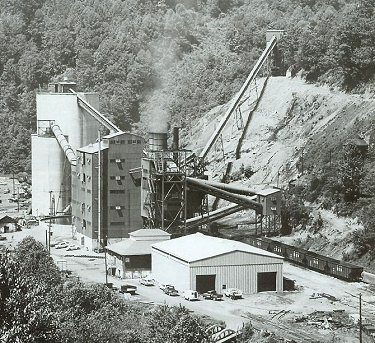
Courtesy of "Tribute to the Coal Miner," used with permission
A photograph of Eastern Associated's preparation plant at Stotesbury, built in 1967, shown here probably during the energy boom of the late 1970s. Behind the plant
can be seen a really huge silo and the refuse conveyor going up the hill.

November 2002 photo by author
This row of company built houses may have been for coal mine management.

November 2002 photo by author
The rear of these mine foremen's company houses showing the decorative attic vents that the coal company installed.

November 2002 photo by author
Another section of the Stotesbury mining camp.

November 2002 photo by author
Stotesbury is slowly returning to nature.

November 1997 photo by author
Old company-built houses at the edge of the camp coming apart.
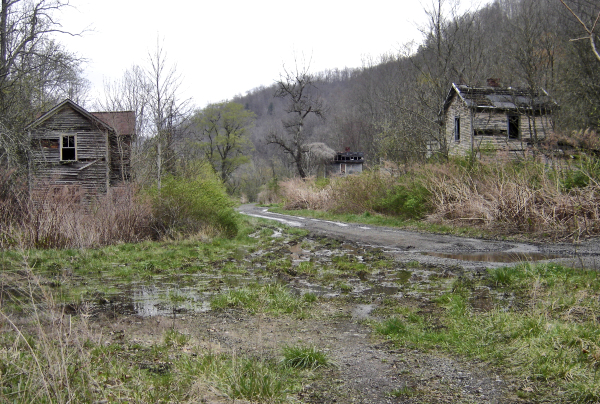
April 2007 photo by author
A decade later the above scene was even more forlorn.

January 2008 photo by author
More Stotesbury abandonment. Most of the homes in the lower end of the coal camp are abandoned.

December 2008 photo by author
Stotesbury coal camp becoming engulfed in the woods.
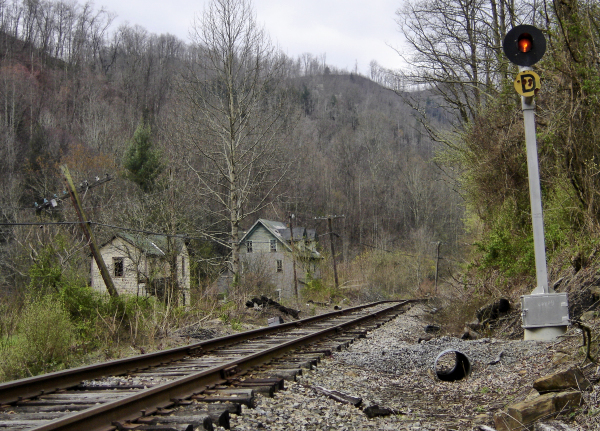
April 2007 photo by author
The railroad and the homes were constructed almost a century ago.

January 2008 photo by author
The largest remaining home in Stotesbury.
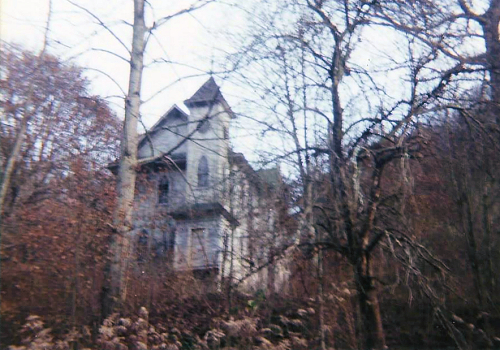
November 1997 photo by author
St. John's Baptist Church was for the African-American community in Stotesbury. There is even
a modest cemetery behind the church.

January 2008 photo by author
After years of neglect the church fell into severe disrepair and collapsed a few years after this picture was taken.

Janurary 2008 photo by author
The cornerstone on the church had become mostly illegible.
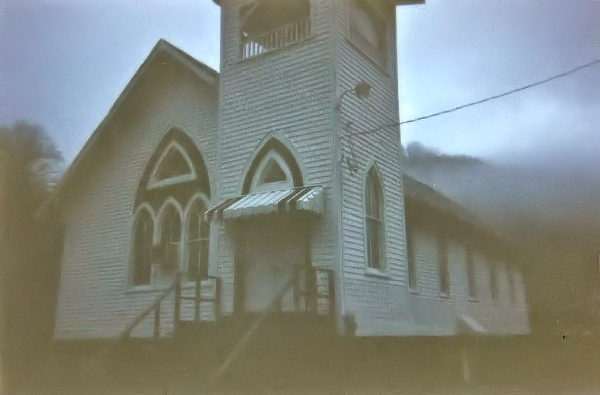
December 2000 photo by author
The church for (historically) white people in Stotesbury at 6:30 in the morning.

April 2007 photo by author
A better view of the church.

2020 photo by David Dunlap
Two decades after my first picture the church still exists. Click here
for high resolution image.
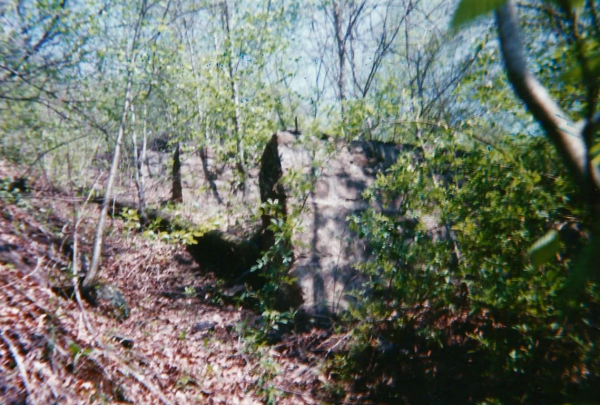
May 2000 photo by author
Old cut stone piers going up the mountain for a monitor-car incline or conveyor.

May 2000 photo by author
I found an old portal up on the hill, before the area was reclaimed.

January 2004 photo by author
Another picture of the portal taken after the area was reclaimed.

January 2004 photo by author
Part of the half-burnt slate dump at Stotesbury may be refuse from mining coal nearly a century ago.

April 2001 photo by author
This photograph taken in April 2001 shows White Mountain Mining's Stotesbury operation just before it opened. Three new orange scoops, as well as another piece of underground equipment painted white, are visable. This was just after the California brownouts of 2000-2001 had driven the price of coal up and everyone in coal country was optimistic. I even heard reports of steam coal selling
for as much as 55 dollars a ton on the spot market.

November 2002 photo by author
A year and a half later, when this picture was taken, the mine had shut down and the company was bankrupt. The ruins of the originial mine can be seen at the top of the reclaimed area.

January 2004 photo by author
Still another year later the splashing sounds of the flooded mine could be heard through this fan that White Mountain Mining installed.
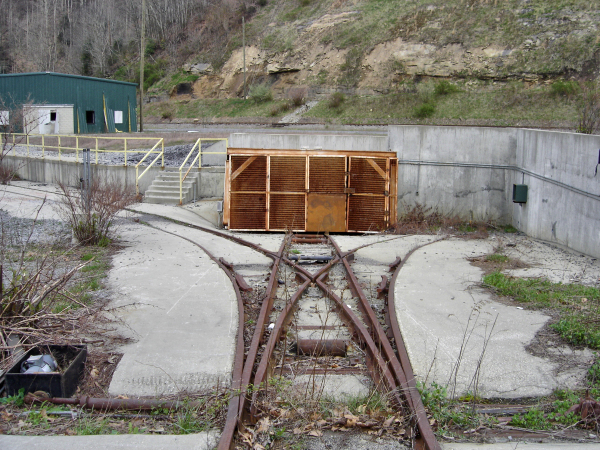
April 2007 photo by author
Locked steel gates cover the manway slope portal at the Stotesbury mine that had been closed for about 5 years when this photo was taken, hence the weeds growing in the mantrip track.

April 2007 photo by author
The hoist for the mantrip.

April 2007 photo by author
Although the operation had only been closed for about 5 years the local residents have begun piecemeal destruction of the mine office and bathhouse.

April 2007 photo by author
More vandalism inside the mine office / bathhouse.

January 2004 photo by author
This is my tribute to Builder Levy's famous photograph that he titled, "Coal Camp Near Grundy." I call it "Coal Camp Near Beckley."
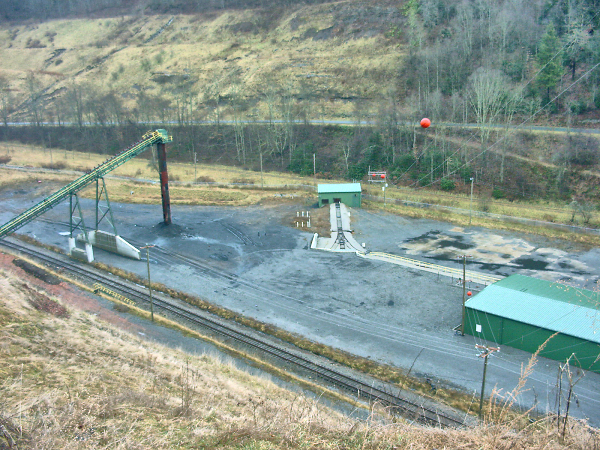
January 2004 photo by author

April 2007 photo by author

January 2008 photo by author


